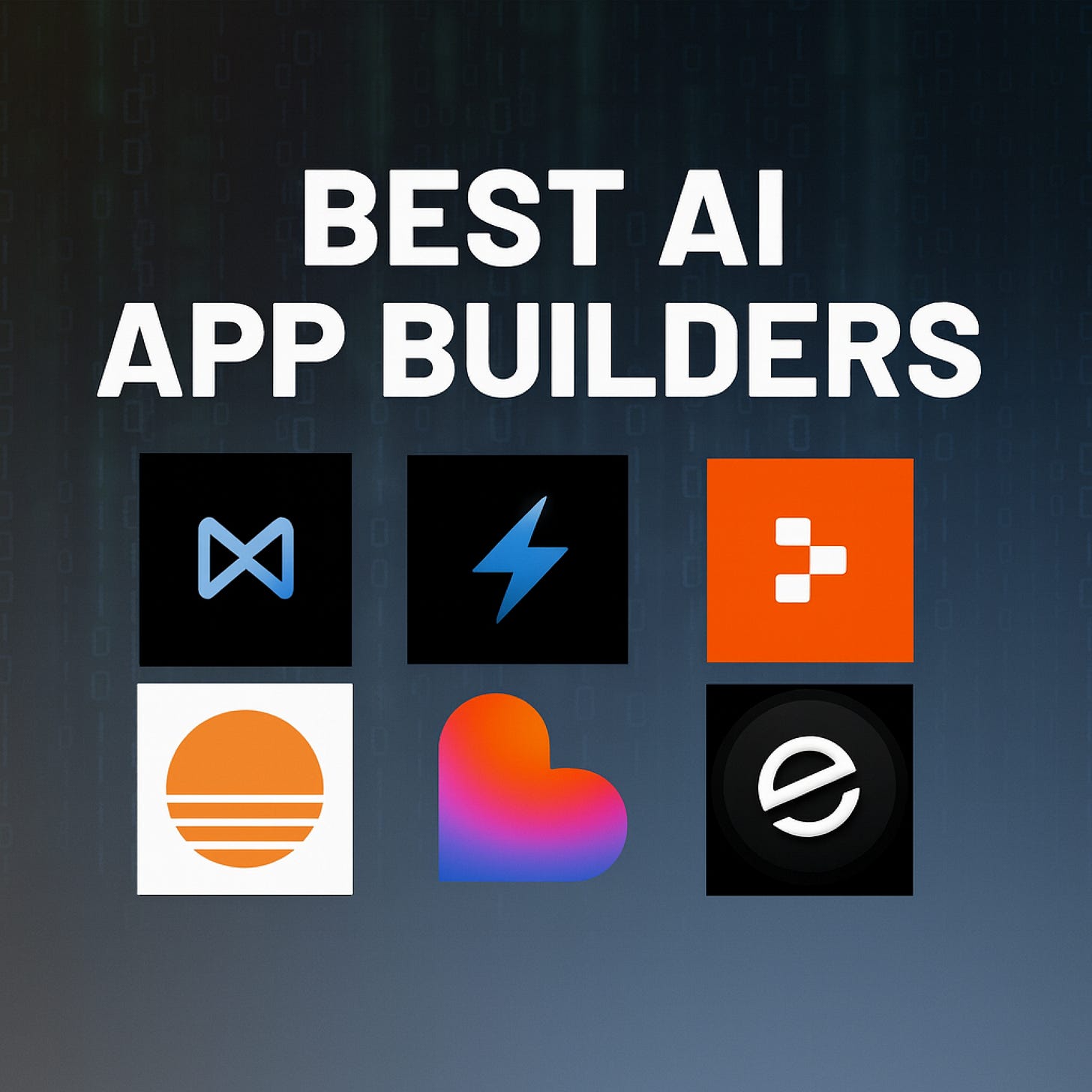The 6 best vibe coding tools in 2025
Seth at No Code MBA just published a concise rundown of his favorite AI app builders for 2025. I thought he had some really good takes. Here’s my notes and commentary on his picks. (watch the video here)
Memex — general‑purpose agentic vibe coding platform
Seth frames Memex as a middle ground between easy, hosted builders like Lovable and full IDEs like Cursor—powerful and flexible, but still approachable. He highlights that it’s language‑agnostic (build in Python, JS, etc.) and it runs on your computer. The agent writes and executes code locally, but you can still sync to GitHub / deploy to the cloud. That matters for ownership, privacy, and the ability to build beyond “just a web app.”
Similar to tools like Replit, Memex has a Plan Mode (like an AI product‑manager that helps scope and de‑risk before building) and a Build Mode. Memex was also recently shortlisted by Digital Ocean and Zapier as one of the best vibe coding tools in 2025.
[Disclaimer: I am a founder of Memex, so I tried to keep it to the points Seth made to avoid too much bias!]
Base44 — integrated, all‑in‑one stack (now part of Wix)
Seth frames Base44 as the easiest tool for beginners. Its backend (database) and auth are integrated, so you can sign in, describe what you want, and get something working with minimal setup. That “everything in one place” lowers activation energy for first‑time builders, though it can mean less flexibility if you prefer full control over your data layer.
Wix acquired Base44 in summer 2025, and thus far the M&A dynamics don’t seem to have impacted the product direction too much. Having been acquired in the past, I know from experience it can be quite disruptive–but the Base44 team seems to be shipping well throughout the integration.
Bolt (bolt.new) — integrations first, token‑metered usage
Bolt leans into Figma and GitHub from the jump: import a design file, round‑trip with your repo, and iterate from there. If your workflow starts in design or lives in GitHub, that orientation feels natural.
Pricing is token‑based: complexity and project size drive cost more than sheer message count, which is different from some message‑credit systems. You’ll typically connect an external database (often Supabase) rather than using an integrated backend. They recently launched an update to their agent that embeds Claude Code and OpenAI’s Codex coding agents directly into Bolt. That in itself is an interesting development–the AI model companies have released many frameworks for building agents on their models, but this is one of the more high-profile adoptions of such tools. Whether that will be a lasting trend or not is to be determined.
Lovable — popular, with a new agent mode
Lovable is a crowd favorite with a familiar chat‑to‑build experience. The recent Agent Mode moved pricing toward usage‑based billing (cost scales with task complexity), which aligns with what Seth mentions about evolving models. On the backend, many users pair Lovable with Supabase for database, auth, and edge functions. (Lovable, Lovable Documentation)
If you’re comparing Bolt vs. Lovable: both support GitHub and Supabase; the right choice often comes down to which editor flow you vibe with. That’s exactly Seth’s advice—try both on a small build and see which one “clicks.” (YouTube)
Emergent — very agentic, one‑prompt end‑to‑end
Seth calls Emergent out for being highly agentic: you describe what you want and it coordinates multiple agents to scaffold, debug, and ship with minimal back‑and‑forth. If you like the idea of a one‑prompt build experience and can live within that system’s conventions, it’s worth a spin.
Emergent’s own positioning matches that: “think it, describe it, ship it,” with agents handling full‑stack tasks (frontend, backend, auth, deploy).
Replit — popular, and now with integrated database options
Replit remains a go‑to for many builders because everything’s in one browser workspace. Seth notes he’s personally gotten “stuck” more here than with the others, but also that these tools improve fast—so your mileage may vary. If you want a hosted environment with an integrated SQL database (and recent improvements to separate dev/prod DBs), Replit’s worth a look.
Bonus: Cursor (and Windsurf) — the IDE route if you’re more technical
Seth suggests you might start with an app builder, then “graduate” to a developer IDE like Cursor (or Windsurf) for more control and typically lower per‑unit costs at scale. Cursor’s model is familiar to engineers: a VS Code–style IDE with chat, refactors, and multi‑file edits, plus straightforward plans. Windsurf is a similar, agent‑forward IDE. If you’re comfortable in code, either can feel like home.
Sources: Seth’s video overview and official docs/pricing pages for each tool were used to ground the details above. (YouTube, Memex, TechCrunch, bolt.new, Bolt Help Center, Lovable, Lovable Documentation, Emergent, Y Combinator, Replit Docs, Replit Blog, Cursor, Windsurf)



